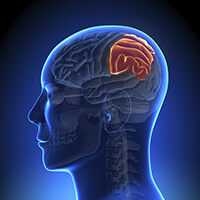 What Area Does This Part Of Your Brain Control?
What Area Does This Part Of Your Brain Control?
There are four functions of the brain that we will go over in the next few articles on this site. The lobes consist of the parietal lobe, frontal lobe, occipital lobe, and the temporal lobe. This article will cover all the functions of the parietal lobe and how it helps to keep our bodies function. The location of this lobe, if you look to picture on the left, is located towards the back, upper part of your cortex. This processes sensory information that had to do with taste, temperature and touch.
The parietal lobe is said to carry out some specific functions in our bodies. As apart of the cortex, it has a lot of responsibilities and has to be able to process sensory information within seconds. This part of the brain is where information such as taste, temperature and touch are integrated, or processed. Humans would not be able to feel sensations of touch, if this part of the brain was damaged. The parietal lobe contains an are known as the primary sensory area. This is also an essential element of spatial information, which gives us the ability to judge size.
So What Does The Parietal Lobe Do?
As already mentioned, the parietal lobe contains an area known as the primary sensory area. This is where impulses from the skin, such as warmth, cold, pain, and touch are interpreted. Just like the primary motor area in the frontal lobe, the more sensory input that comes from an area of the body, the more surface area of the lobe is involved in the processing of that information. It is also an essential element of spatial information, which gives us the ability to judge size, distance and shapes. A specific triangular-shaped area known as the parietal association cortex gives us the ability to understand written language and solve mathematical problems.
The left hemisphere of the lobe is often more active in right handed people. It is known for handling the symbolism of letters and numbers. The right hemisphere, on the other hand, tends to be more active in left-handed people and helps with the interpretation of images and spatial distances within them, such as those that exist in maps.
Can There Be Injuries To The Parietal Lobe?
There are a few damages to both sides of these lobes. The left lobe can result in what is called “gerstmann’s syndrome”. This includes right-left confusion, difficulty with writing and difficulty with mathematics. It can also produce disorders of language and the inability to perceive objects normally. Damage to the right side of the lobe can result in neglecting part of the body or space, which can impair self-care skills such as, dressing and washing. Right side damage can also cause difficulty in making things, denial of deficits and drawing ability. Bi-lateral damage can also be a cause called “baliant’s syndrome” which is a visual attention and motor syndrome. This is characterized by the inability to voluntarily control the gaze, inability to integrate components of a visual sense and the inability to accurately reach for an object with visual guidance.
